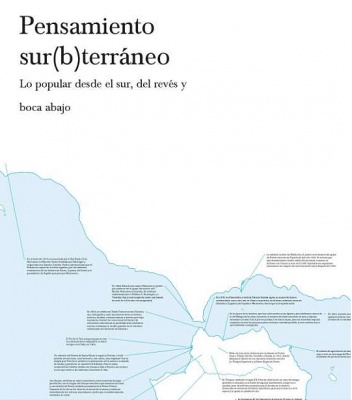Descripción de la Exposición
How far can you see? - asks Michał Martychowiec in one of his works on display at the Cabinet of True Horizons exhibition in the Rodriguez Gallery. The horizon is a crucial figure in the show: not just as its topic, but precisely as its visual boundary. Can you collect perspectives? Fields of view? Many of the artworks gathered in the Cabinet refer to the line and notion of horizon. Others evoke the figure of the eye. These two things are strictly related; the horizon line is defined by our view and appears to be true, but only from the point of view of the beholder.
Therefore, Cabinet of True Horizons is a show about looking, about how much we can perceive and how far we can see.
Historically, a cabinet was a place used to store and display collections, and also to study questions evoked by them. The ephemeral collection of diverse works, placed in the Cabinet of True Horizons for the time of the exhibition, provides material to ponder upon the possible roles of art in defining our field of view. Can we view artworks in the same way in which we study works of cartography − maps − that allow us to see beyond the physical horizon, to look at an entire country, continent, or the whole world at once? Can artworks be seen as a certain kind of horizons that catch our eye and delimit our field of view? Does the artwork’s meaning lie beyond its visual horizon − the horizon we must transcend, in order to understand what we see? Perhaps, by looking beyond the horizon of form, we can see not only the work itself, but also expand our field of view by adding new, previously unnoticed, aesthetical, existential or political dimensions of reality?
In the Cabinet of True Horizons, some artworks look the viewer in the eye, as if they were asking: what does art see? Others, paradoxically, reveal things by covering them. Others still, resemble visual barriers that provoke reflection on how our field of view is limited; and also on the unsettling affinity between the grid of coordinates overlaying the cartographic projection of the globe, and the fences that divide the world in real space. Borders are no longer abstract and take concrete, visible form. In 1989, a year that was supposed to become the beginning of the end of history, only slightly over 10 countries in the world had walls and fences along their borders. Today, this kind of “border-made-real” surrounds almost 70 countries, and many more are planning to follow in their footsteps. The growing access to more and more information seems to be inversely proportional to the level of access to knowledge about the things happening around us. Technology has made us almost omniscient, but paradoxically, our field of view keeps shrinking; the world has become more visible, but it’s also less and less transparent. Art responds with another kind of intransparency - one that draws the viewer into looking beyond the horizon of what we are shown.

Premio. 13 mar de 2025 - 27 abr de 2025 / Madrid, España
Componer Saberes para imaginar y construir futuros sostenibles

Formación. 27 mar de 2025 - 28 mar de 2025 / CAAC - Centro Andaluz de Arte Contemporáneo / Sevilla, España
Un orientalismo subalterno”, IV capítulo de “Pensamiento sur(b)terráneo"